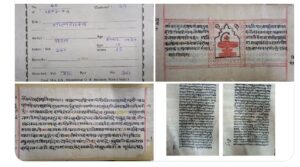New Delhi, July 14: While the ongoing tension with China in East Ladakh may seem to be diminishing, the Indian Army is working to increase its strength.
After 1.42 lakh SIG-716 assault rifles, the Indian Army has now placed an order to purchase anti-tank guided missiles and ‘Heron’ drones from Israel.
Not only this, work is also underway to upgrade the existing fleet to fighter Unmanned Aerial Vehicles (UAVs) under Project Cheetah of the Indian Air force. Defence Research and Development Organisation (DRDO) is also developing a portable anti-tank guided missile to meet the requirements of 50,000 missiles.
India received a consignment of ‘Spike’ an anti-tank guided missiles from Israel after the Balakot Airstrike last year. The three forces are already using the Heron UAV for surveillance in the Ladakh sector, which can fly for two days at a time. Now the Indian Army is working towards adding the combat version of the Heron drone to its fleet.
After rising tensions with China and the martyrdom of 20 Indian soldiers in the Galwan Valley on 15 June, the central government released an emergency fund of Rs 500 crore for the three armies. With this fund, the strength of the attack is being increased along with the surveillance capability of the armies. This is the reason that apart from buying 72 thousand assault rifles from the US, now the Indian Army will also buy Heron drones and Spike anti guided missiles from Israel.
A source associated with the government said that the number of Heron UAV needs to be increased in view of the current situation. It needs to be bought especially to meet the needs of the Air force. However, the number of how many Heron drones will be purchased from Israel has not been known.
Here, the IAF is working on an armed version of the Heron. The Heron drone can keep an eye on the enemy from a height of 10 km. It can fly for two days at a time and can monitor every movement of the enemy from a height of 10 km.
After increasing tension with China, the Indian Army is planning to take a large number of Spike missiles to counter the threat of the enemy’s armed regiment.
Meanwhile, DRDO is also developing indigenous portable anti-tank guided missiles. Through this, the requirements of 50 thousand such missiles of infantry units will be met.
Apart from this, due to the tension on the Line of Actual Control (LAC), the process of procuring Spice-2000 bombs, assault rifles and missiles has already been started by the Army.





